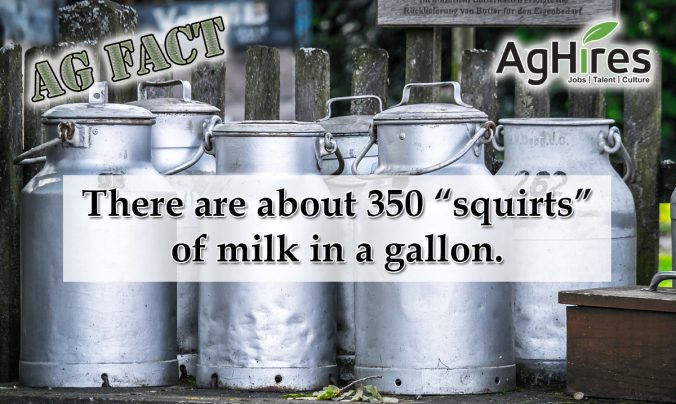
June is National Dairy Month. It’s time to celebrate the cows and farmers that raise them. Without them what would we eat on our cereal or enjoy on cone?
From the Cow to the Shelf
Most cows are milked 2 or 3 times a day using milking machines, which only takes minutes. Before the milking machine was invented, farmers could only milk 6 cows an hour. Today a cow can produce about 7 gallons of milk each day or about 400 glasses of milk.
Within 2 hours of milking the cow, the milk is cooled to 45°F. After a sample of the milk is taken, it is then pumped from the farmers bulk tank to a milk truck by a handler. Handlers may pick up milk from multiple farms to take to the processing facilities, mixing all the milk together.
Before the milk is unloaded it is tested for antibiotic residue. If it passes the test, it is then pumped into the facility’s holding tank. It is rare, but if it does not pass the entire truck is rejected. The samples from each farm will be tested to find the source of the antibiotic residue. Steps will be against the farm the residue came from.
At the plant, milk is stored at less than 45°F and is processed within 24 hours. However, it can be stored for up to 72 hours before processing.
Pasteurized
Nearly all milk is pasteurized, with only a few exceptions. Milk produced for drinking, also known as fluid milk, is pasteurized at 161°F for 15 seconds. Ice cream mix is pasteurized at 155°F for 30 minutes or 175°F for 25 secs. Milk used for yogurt is pasteurized at 185°F for 30 minutes or 203°F for 10 minutes, while milk used for cheese is pasteurized depending on the type of cheese.
Homogenization
After pasteurization, the milk is then homogenized, a process to reduce milk fat to keep them from separating. To achieve this, the liquid is forced through a small hole at a high velocity to break up the fat.
Separation
The separation process is used to create different types of milk. To do this milk is spun through a centrifuge to separate the cream from the milk. The cream and milk are then remixed to create the desired fat content.
Other facts:
- There are about 350 “squirts” of milk in a gallon.
- Milk hits the store shelves in about 48 hours after being milked.
- The first cow in America arrived in 1611 at the Jamestown colony.
- Before the 1850s, most families had their own cow.
- The first regular shipment of milk by railroad started in 1841 between Orange County, New York and New York City.
- Milking machines were invented in 1894.
See more facts about cows here.
Want more Agriculture Facts? Click here
Follow us on Facebook and Twitter to get your weekly dose of Ag Facts.
Sources:
Dairy Discovery Zone
Milk Facts
American Dairy
Bayer Crop Science




